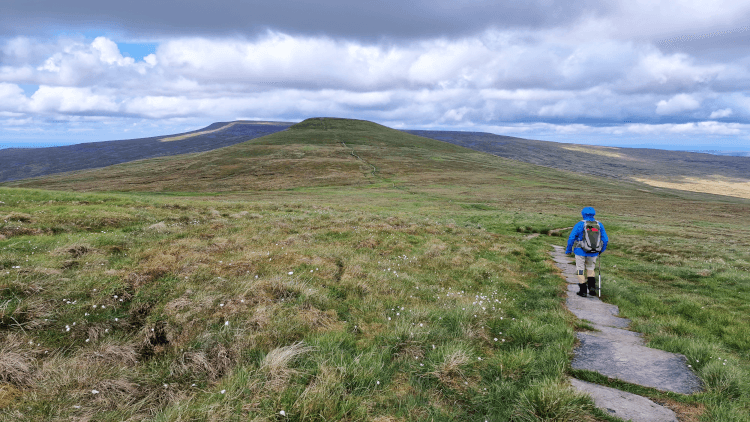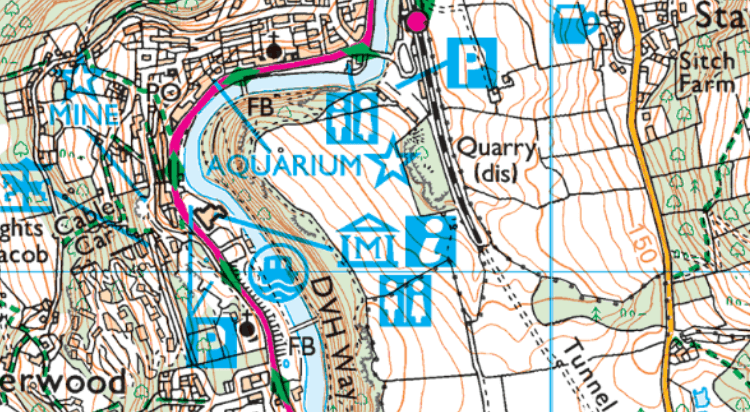Toileting on the Trails
As remote stretches of the countryside aren't exactly littered with loos, we explain how to relieve yourself while out on your long-distance walk.
Toileting on the Trails
https://www.contours.co.uk/toileting-on-the-trails
by Christine Saul
There’s a question the customer service team at Contours Holidays get asked a lot: what should a walker do if they need the toilet whilst out on the trail?
There are no official guidelines in The Countryside Code for toileting whilst enjoying the outdoors in the UK, but there should be.
It is assumed that you will use a public toilet, duck into a local café or pub, or hold it in until you reach your hotel or B&B. A nice indoor toilet is not always an option, however, especially when the need strikes in the middle of nowhere on a long-distance trail still miles from the nearest town or village.

Some days, depending on the trail and section of trail you are walking, you may walk all day without passing a single public toilet.
And that means you’ll have to improvise.
Let’s cover the easy option first. Most towns and larger villages along the trails, and some car parks, will have public toilets. Some will be accessible 24 hours, others only during the day, and some may be closed altogether during low season. Some will be free and others you may need to pay to enter using either coins or contactless card payment.
Public toilets are often signposted from major footpaths, and may show up on your map. Keep in mind that these permanent pointers can’t account for seasonal, unexpected or recent closures.

Needing to urinate whilst out on the trail is obviously less of a problem for men than for women, but everyone will need to find a suitable place to discreetly hide out of the way to do your business.
For women, this will usually involve finding a wall, tree, bush or hedge behind which to squat down out of sight for the necessary disrobing, unless you carry a device like a Shewee, which allows women to urinate standing without the need to remove any clothing. Make sure to practice using one first, though!
Beyond this gesture for public decency, the most important thing to consider when picking a place to pee is your distance from water.
To avoid contamination, never urinate nearby a water source. Always ensure you are at least 30 metres away from a water source. Make sure you’re not near to any property, either.

If you need to use toilet paper or tissue, you must carry this back out with you: do not just leave your toilet paper behind, visible on the ground.
With millions of walkers out on the trails each year, if everyone did that it wouldn’t be a very pleasant sight. I’ve witnessed too many instances of unsightly toilet paper left strewn in tourist hotspots in prime toileting locations.
Bring along a nappy bag, doggy poo bag or resealable freezer bag and carry your used toilet roll in that.
Alternatively, consider replacing single-use toilet paper entirely. I always use a pee rag, which is much more environmentally friendly.
A pee rag is a reusable piece of fabric which is used to wipe away any excess urine and can be washed and used again and again.
An old bandana or head scarf sacrificed to this purpose would suffice, but you can also buy specially made pee rags that are made with materials that are highly absorbent and trap any smells, so you don’t have to worry about any unpleasant odours following you around.
Dedicated pee rags usually have sewn-in loops so you can clip them to your pack.
If you need to poo whilst walking, this is a bit more of a problem. Human poo takes a full year to biodegrade and contains parasites, diseases and bacteria which can contaminate farm crops, sicken livestock or end up in rivers or the sea etc.
Do not just go and hide in trees or behind a bush and leave your poo and toilet paper behind you on the ground. Instead, be prepared and carry your own small ‘toilet kit’ with you.
You will need:
These can all be stored in a larger sealable freezer or Ziploc bag, or you may want to carry an old dry bag as a designated ‘toilet bag’ to contain your kit and bagged toilet paper waste in until you find a rubbish bin where you can dispose of it.
There are two methods for dealing with the poo itself.
The first option is to add a trowel to your toilet kit so that you can dig a ‘cat hole’ to bury your poo.
Lightweight titanium or plastic trowels are available to buy from camping shops. If you don’t carry a trowel, you could also use a walking pole or a sturdy stick to dig a hole, depending on how hard the ground is.
Ensure you are hidden and out of sight and at least 50 metres from a water source, then use your trowel to dig a hole around 15–20 cm (6–8 inches) deep. Do your business into the hole, then fill it in with soil again. This will help your waste to biodegrade quicker.
Do not bury your toilet paper; animals will only dig it up. Your used tissue needs to be carried out with you in your toilet kit bag and disposed of in the next litter bin you pass.
The second option, which has become preferable recently due to the rise in people enjoying the outdoors, and may soon replace the advice to bury your excrement, is to leave no trace: carry your poo out with you and dispose of your waste in the next bin you pass — properly bagged so it cannot leak.
To pick up your poo, simply place one hand inside the poo or nappy bag like a glove and pick up the poo. Using the other hand, turn the bag inside out around the poo and tie a knot with the bag handles to seal it. Double or triple bag your poo, then store it safely in the side of your pack or in your ‘toilet dry bag’ until you can dispose of it in a bin.
Dog owners will be used to this practice and therefore probably find this method less gross, but it is the most responsible option for all of us. Poo bags no-longer need to be separated from general waste, so you can dispose of your used bags in any litter bin, but it’s highly important you bag it well to avoid leaks.
If you’re planning to use the pack-it-out method, you may want to look into better-designed and more reliably sanitary options than the basic nappy sack.
You can buy specially made dog poo carrying bags like the Dicky Bag that are designed to carry filled poo bags and can be clipped to your pack. These are suitable also for human poo.
Or you can go one further, and invest in Waste Alleviation and Gelling Bags (WAG bags) or Go Anywhere Waste Kit bags. The bags are double-lined and puncture-resistant. They are usually sold as kits, which contain a hand sanitizer wipe, a “Poo Powder” gelling and deodorizing agent to hide and contain any smells within the bag, and a small portion of toilet paper. You simply seal the bag once done and carry it out to dispose of in the next bin you pass.
WAG bags have become a requirement on several popular international trails, but they’re still expensive to buy over here. As demand rises for them in the UK, the availability and pricing of WAG bags should improve.
A touchy subject, toileting, but I hope the above advice proves useful on the trails.

Head of Customer Service, Product and Finance
Thousands of miles walked from mountain peaks to coastal shores — exhaling worries, inhaling fresh air.